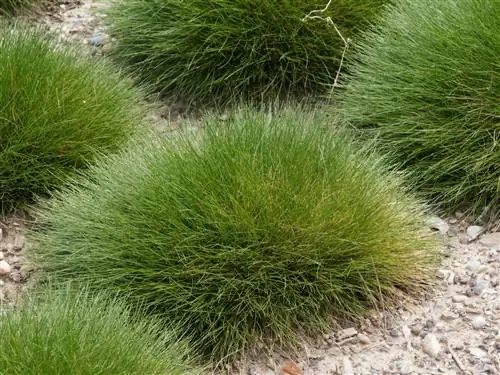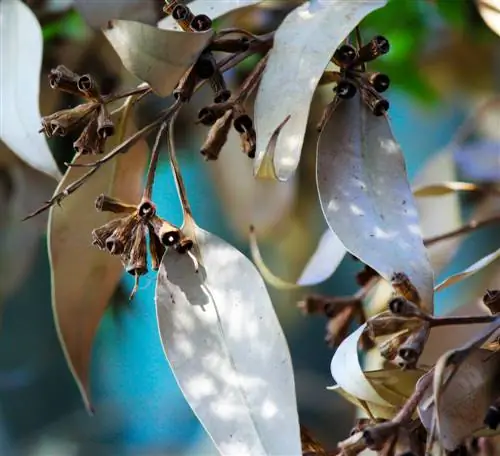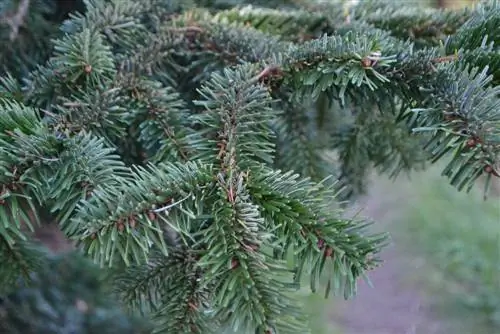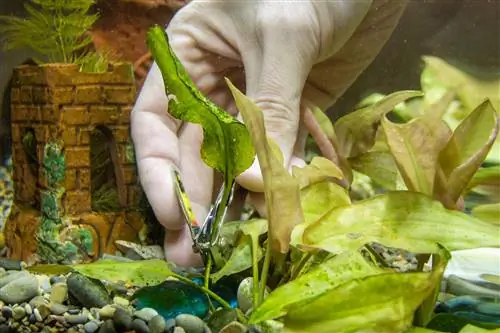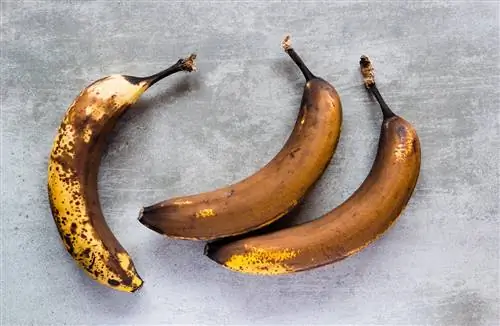- Author admin [email protected].
- Public 2023-12-16 16:46.
- Last modified 2025-01-23 11:22.
Bearskin grass (Festuca gautieri) belongs to the sweet grass family. Also known as Pyrenean fescue, the ornamental grass is often found in rock gardens. Find out why bearskin grass turns brown and what you should do to keep it growing he althy and strong.

Why does bearskin grass turn brown in most cases?
Brown spots in bearskin grass often occur when the plant has becomeold. If larger parts of the plant are discolored, you should transplant them.waterloggingandnutrient-rich soil can also turn parts of the bearskin grass brown. Remove the affected areas.
How do I save my bearskin grass when it turns brown?
The actually evergreen plant is very robust and does not react very sensitively to diseases and pests. If you discover some yellow or brown spots in your plant, it is usually enough to remove theaffected parts Over time, the plant will grow back over so that these spots are hidden. If larger parts of the plant have turned brown, you can also transplant them to a suitable location. As long as part of the plant is still green, it can be saved.
Which care errors cause brown spots in bearskin grass?
Bearskin grass does not tolerate wet feet. Therefore, be sure to avoidwaterlogging, regardless of whether your plant is in a bed or a pot. Make sure the soil is permeable and poor. The plant also cannot tolerate too many nutrients. This can also be a reason for brown spots on plant parts. The ornamental grass should also be cut in spring or autumn. Shorten the stalks and remove yellow and brown areas.
How do I best care for bearskin grass for he althy growth?
Optimally, bearskin grass is in partial shade or sunshine and lovesdrained, stony soilIt is also suitable for planting in pots or containers and can be arranged very well with other plants that have a similar location requirement (for example lavender or sedum). Make sure there is good water drainage so that no backwater can collect. WateringYou bearskin grassvery economical Fertilization is only rarely necessary. The plant generally requires little attention and spreads in a spherical shape without any intervention.
Tip
Bear grass can be used in many different ways
As an evergreen and densely growing ornamental grass, bearskin grass is particularly suitable as a ground cover or even as a lawn replacement. It has low demands on the soil and is therefore often used in rock, heather or gravel gardens. Pyrenean fescue is also ideal for green roofs.

